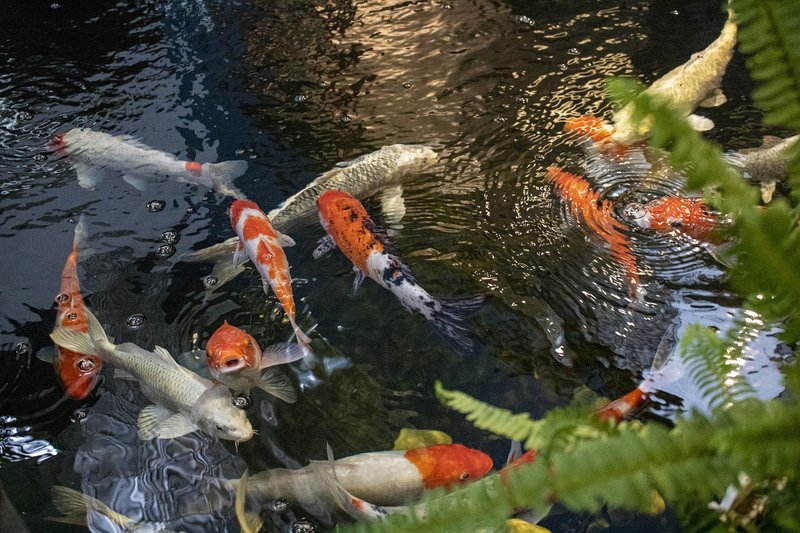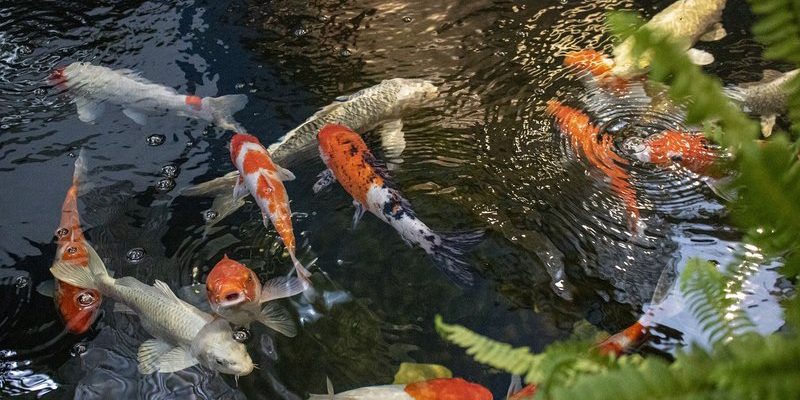
Imagine your pond as a mini-ecosystem where everything is interconnected. Fish, plants, and even beneficial bacteria all play vital roles in keeping the environment balanced. If oxygen levels drop too low, it can spell trouble for your fish, leading to stress, disease, and even death. In this guide, we’ll explore how to ensure those oxygen levels stay healthy and what steps you can take to improve them. Let’s dive in!
Understanding Oxygen Levels in Fish Ponds
Keeping healthy oxygen levels in your fish pond starts with understanding how oxygen works in water. Unlike air, which has a higher concentration of oxygen, water holds less, so your fish rely on constant replenishment. The higher the water temperature, the less oxygen it can hold—think of it like trying to dissolve sugar in hot tea versus cold tea.
Several factors affect oxygen levels, including water temperature, algae growth, and the number of fish in your pond. A crowded pond, for instance, can quickly lead to oxygen depletion, so it’s essential to keep an eye on your fish population and pond size. You want your fish to be happy and healthy, so let’s go over some practical tips to maintain those oxygen levels.
Use Aeration Techniques
One of the best ways to boost oxygen levels in your fish pond is through aeration. This process involves introducing air into the water, which helps dissolve more oxygen for your fish to breathe. There are several methods to effectively aerate your pond:
- Pond Aerators: These devices use pumps to circulate water and create small bubbles that increase oxygen saturation. They come in various sizes and styles, so be sure to choose one that fits your pond’s needs.
- Fountains: Not only do they look beautiful, but pond fountains also help agitate the water surface, promoting oxygen exchange. Plus, the sound of running water is soothing—it’s a win-win!
- Waterfalls: If your pond setup allows, consider adding a waterfall. The movement of water over rocks adds oxygen as it tumbles down, creating a natural aeration system.
Aeration is especially important during hot summer months when oxygen levels can dip due to increased water temperatures and higher fish activity. Remember, a well-aerated pond leads to healthier fish and a more balanced ecosystem.
Control Algae Growth
Algae can seem like a harmless part of your pond’s ecosystem, but too much of it can be a serious problem. When algae blooms excessively, they can consume large amounts of oxygen, especially when they die off and decompose. This can create a dangerous situation for your fish.
To keep algae growth in check, consider these strategies:
- Limit Nutrient Runoff: Fertilizers and organic materials can fuel algae growth. Make sure to manage runoff from nearby gardens or lawn areas to keep your pond healthier.
- Add Aquatic Plants: Having a variety of submerged and floating plants can outcompete algae for nutrients, helping to keep their numbers down.
- Use UV Clarifiers: These devices can help control algae growth by disrupting the life cycle of algae in the water. They’re like having a little bouncer at the entrance to your pond!
By maintaining a balance between algae and beneficial organisms, you can ensure that your pond’s oxygen levels remain stable and healthy for your fish.
Monitor Water Temperature
Water temperature plays a significant role in determining how much oxygen your pond can hold. Fish are cold-blooded, meaning their body temperature matches that of the water. If the water gets too warm, it holds less oxygen, which can lead to stress and health issues for your fish.
To manage water temperature:
- Shade Structures: Adding shade to your pond can help keep the water cooler. You can use floating plants, like lily pads, or even consider installing a canopy over part of the pond.
- Water Depth: Deeper ponds tend to maintain cooler temperatures, so if you’re planning a pond, think about going a little deeper.
- Circulation: Moving water tends to stay cooler. So, aerators or fountains not only oxygenate the water but can also lower temperatures through movement.
Keeping an eye on water temperature will help you ensure that your pond remains a comfortable and safe environment for your fish.
Regular Water Testing
Think of water testing as the health check-up for your pond. Regular testing helps you keep track of oxygen levels and other important water parameters, such as pH, ammonia, nitrite, and nitrate levels. Many local pond supply stores offer testing kits, and they’re easy to use!
Here’s why testing is essential:
- Early Detection: Catching problems early can save your fish. If you notice low oxygen levels or high ammonia, you can take action before it becomes a crisis.
- Adjustments: Regular testing helps you understand how well your aeration methods are working. If you spot issues, you can tweak your strategy to find what works best.
- Water Quality: Healthy water leads to happy fish. Knowing your pond’s overall condition can help you maintain a thriving ecosystem.
Aim to test your pond water every couple of weeks, especially during warmer months when conditions can change more rapidly.
Stock Your Pond Wisely
When it comes to maintaining healthy oxygen levels, the number of fish in your pond matters. Overcrowding can lead to stress and increased waste, which in turn can deplete oxygen levels. So, how do you avoid this common pitfall?
- Calculate Fish Load: A general rule of thumb is to have about 1 inch of fish for every square foot of surface area in your pond. This helps prevent overcrowding and ensures that there’s enough oxygen to go around.
- Choose Compatible Species: Some fish require more oxygen than others. Research and select species that are compatible with your pond’s size and conditions.
- Regular culling: If you notice your fish population growing too rapidly, consider finding new homes for some of the fish to maintain a healthy balance.
By being mindful of how many fish you have, you can create a more stable environment. It’s all about being a responsible pond parent!
Maintain Your Pond Equipment
Finally, let’s not forget about the equipment that helps keep your pond healthy. Regular maintenance of pumps, filters, and aerators is crucial for ensuring they’re working optimally.
Here’s what to keep in mind:
- Clean Filters: Clogged filters can restrict water flow and oxygenation. Make a habit of cleaning or replacing filters as needed to keep everything running smoothly.
- Check Pumps: Make sure your pumps are functioning well. A simple inspection can help you catch problems before they become bigger issues.
- Winterization: If you live in a colder climate, don’t forget to prepare your pond equipment for winter. This includes removing pumps and ensuring aeration systems are ready for the colder months.
Proper equipment maintenance can save you time, money, and stress down the line. It’s just like regular check-ups for your car—it helps everything run smoothly!
Closing Thoughts
Maintaining healthy oxygen levels in fish ponds is all about balance and awareness. By using aeration techniques, controlling algae growth, monitoring water temperature, and keeping an eye on your fish population, you can create a thriving environment for your aquatic pets. Regular testing and equipment maintenance also play key roles in sustaining the health of your pond.
With just a little knowledge and effort, you can enjoy a beautiful and vibrant fish pond that’s as healthy as it is lovely. So grab a cup of coffee, enjoy your time by the water, and watch your fish flourish!

